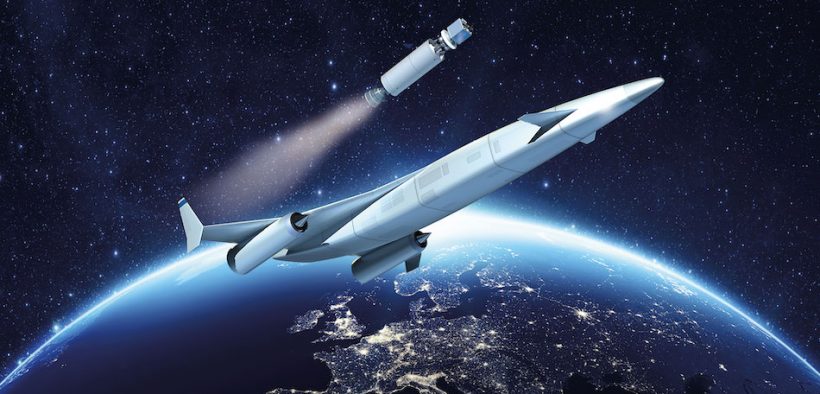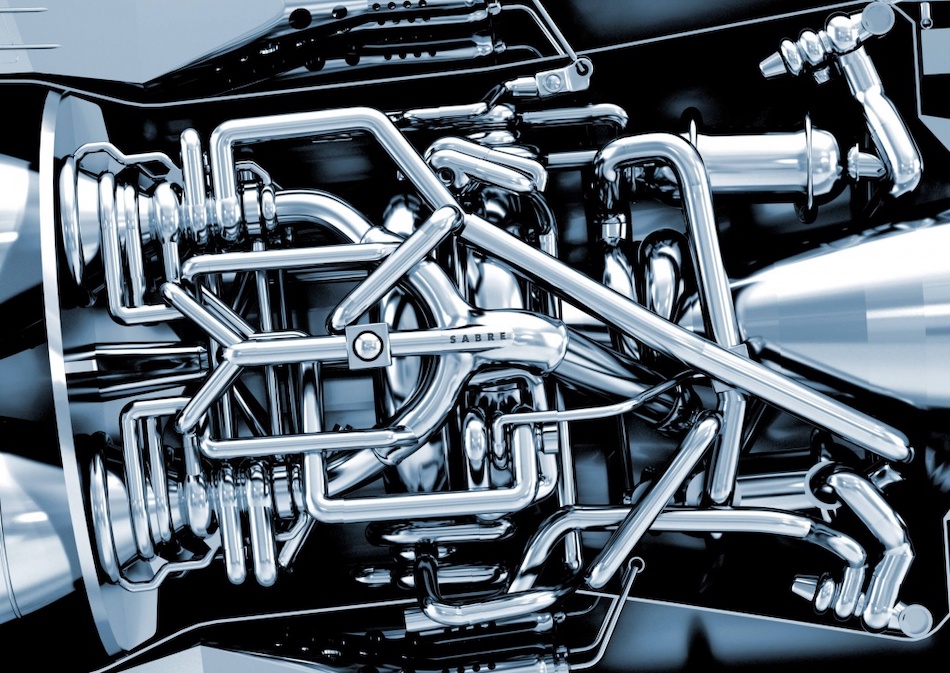Hypersonic Air Travel Revolution
Share

Europe to Australia in under five hours?
Engineers at UK-based Reaction Engines who are working on a system to enable hypersonic air travel say that they have passed a significant development milestone. A key element of their SABRE air-breathing rocket engine – the precooler component – has successfully passed the first phase of high-temperature testing. The company’s USP is that no other air-breathing rocket engine exists, as current rocket motors rely on large and expensive quantities of liquefied oxygen.
 Formed in 1989 by three propulsion engineers from Rolls Royce, Reaction Engines designs and develops the technologies needed for SABRE (Synergetic Air-Breathing Rocket Engine), a new class of innovative hypersonic propulsion system. This system represents a major breakthrough in aerospace engine technology due to the development of ultra-lightweight heat exchangers, which stop engine components from overheating at high flight speeds.
Formed in 1989 by three propulsion engineers from Rolls Royce, Reaction Engines designs and develops the technologies needed for SABRE (Synergetic Air-Breathing Rocket Engine), a new class of innovative hypersonic propulsion system. This system represents a major breakthrough in aerospace engine technology due to the development of ultra-lightweight heat exchangers, which stop engine components from overheating at high flight speeds.
“SABRE class engines will enable aircraft to fly over five times the speed of sound in the earth’s atmosphere and will allow space launch vehicles to be built that seriously improve the affordability and responsiveness of access to space”.
Unlike jet engines, which are only capable of powering a vehicle up to Mach 3, three times the speed of sound, SABRE class engines will enable aircraft to fly over five times the speed of sound in the earth’s atmosphere and will allow space launch vehicles to be built that seriously improve the affordability and responsiveness of access to space. Reaction Engines says that it is going to revolutionise the way we travel around the globe and into orbit.
A key element of SABRE, its precooler component, recently successfully passed the first phase of high-temperature testing. The testing was designed to directly replicate supersonic flight conditions. The precooler, designed to manage extreme heat, successfully handled temperatures of 420 degrees Celsius, matching the conditions it would face when reaching Mach 3.3 speeds. At that speed, an aircraft would be traveling 50% faster than Concorde.
 The tests were the first phase of an extensive trial programme that will eventually see the precooler exposed to temperatures hotter than 1,000 degrees Celsius, the conditions expected during Mach 5 hypersonic flight. At that speed, hypersonic flights between London and Australia could take just four-and-a-half hours. Moreover, SABRE engines are capable of Mach 25 in rocket mode for space flight. Importantly, SABRE can be scaled in size to provide different levels of thrust for different applications.
The tests were the first phase of an extensive trial programme that will eventually see the precooler exposed to temperatures hotter than 1,000 degrees Celsius, the conditions expected during Mach 5 hypersonic flight. At that speed, hypersonic flights between London and Australia could take just four-and-a-half hours. Moreover, SABRE engines are capable of Mach 25 in rocket mode for space flight. Importantly, SABRE can be scaled in size to provide different levels of thrust for different applications.
Reaction Engines is supported by a £60m funding commitment from the UK government via the UK Space Agency and the European Space Agency, and it received a minority investment of £20.6m from BAE Systems in 2015. More recently, it raised a further £26.5m in a strategic fundraise, securing backing from some of the most influential names in aerospace and finance, including Boeing and Rolls Royce.
Mark Thomas, Reaction Engines’ CEO, said in a recent press release that the results were unparalleled and hugely significant. He stated that “This provides an important validation of our heat exchanger and thermal management technology portfolio, which has application across emerging areas such as very high-speed flight, hybrid electric aviation and integrated vehicle thermal management”.


























